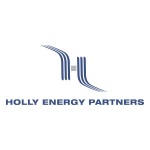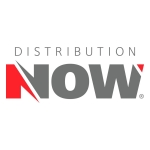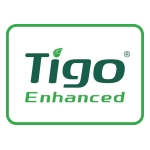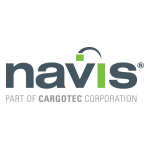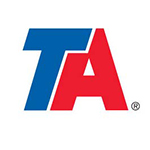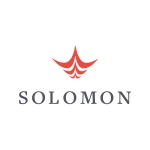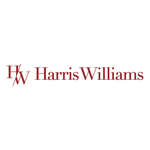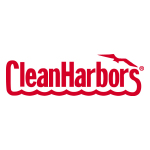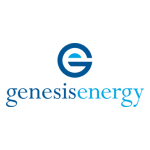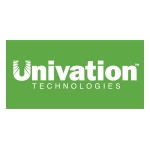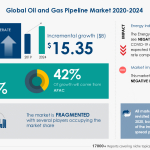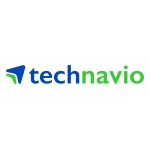-
On track to achieve the capital and cost reductions announced earlier this year
-
All wells that were shut-in due to depressed commodity prices have been brought back online
-
Recontracted approximately 190,000 dekatherms per day (Dth/d) of transportation capacity during the quarter, bringing total transportation recontracting for 2020 to nearly 1,450,000 Dth/d
-
Recently received the Federal Energy Regulatory Commission’s (FERC) Environmental Assessment for the Gulf Run Pipeline, a key milestone for the project
-
Released Enable’s inaugural sustainability report, highlighting the partnership’s commitment to transparency and sustainable business practices
-
Declared a quarterly cash distribution of $0.16525 per unit on all outstanding common units and $0.625 on all outstanding Series A Preferred Units
OKLAHOMA CITY--(BUSINESS WIRE)--Enable Midstream Partners, LP (NYSE: ENBL) today announced financial and operating results for third quarter 2020.
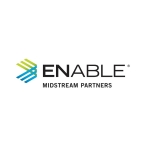
Net loss attributable to limited partners was $164 million for third quarter 2020, a decrease of $296 million compared to $132 million of net income for third quarter 2019. Net loss attributable to common units was $173 million for third quarter 2020, a decrease of $296 million compared to $123 million of net income for third quarter 2019. Enable’s net loss for third quarter 2020 was due to a $225 million non-cash other than temporary impairment on its investment in Southeast Supply Header, LLC. Net cash provided by operating activities was $232 million for third quarter 2020, a decrease of $32 million compared to $264 million for third quarter 2019. Adjusted EBITDA was $229 million for third quarter 2020, a decrease of $66 million compared to $295 million for third quarter 2019. Distributable cash flow (DCF) was $147 million for third quarter 2020, a decrease of $55 million compared to $202 million for third quarter 2019.
For third quarter 2020, DCF exceeded declared distributions to common unitholders by $75 million, resulting in a distribution coverage ratio of 2.04x.
For additional information regarding the non-GAAP financial measures Gross margin, Adjusted EBITDA, DCF, Adjusted interest expense and distribution coverage ratio, please see “Non-GAAP Financial Measures.”
MANAGEMENT PERSPECTIVE
“We continue to focus on what we can control, optimizing our capital deployment, providing safe and reliable operations and implementing cost reductions while directing excess cash flow to reducing debt,” said Rod Sailor, president and CEO. “I am very proud of our employees for providing a high level of service during these challenging times.
“In addition, we continue to deliver on other important initiatives such as our recently released inaugural sustainability report. Sustainable business practices are deeply embedded across our business, and this report provides our stakeholders with a transparent view of our progress and initiatives.”
BUSINESS HIGHLIGHTS
Enable’s inaugural sustainability report marks an important step in the partnership’s sustainability journey. The report focuses on environmental, social and governance issues and is aligned with the voluntary Sustainability Accounting Standards Board (SASB) reporting standards for midstream companies, allowing for better comparisons of Enable’s sustainability performance. The report is available on the partnership’s website at https://enablemidstream.com/sustainability.
As of Sept. 1, 2020, all wells that were shut-in due to depressed commodity prices have been brought back online, and Enable has not experienced any noticeable production performance degradation from these wells. As of Oct. 28, 2020, there were six rigs across Enable’s footprint that were drilling wells expected to be connected to Enable’s gathering systems. Three of those rigs were in the Anadarko Basin, and three were in the Ark-La-Tex Basin.
Enable remains focused on contracting firm, fee-based transportation capacity. Through Sept. 30, 2020, Enable has contracted nearly 1,450,000 Dth/d of firm transportation capacity at an average volume-weighted contract life of over five years. During third quarter 2020, Enable contracted or extended approximately 190,000 Dth/d of firm transportation capacity.
On Oct. 29, 2020, FERC issued an Environmental Assessment for the Gulf Run Pipeline project. The deadline for other federal agencies to provide authorization for the project is Jan. 27, 2021. Backed by a 20-year commitment for 1.1 billion cubic feet per day (Bcf/d) from cornerstone shipper Golden Pass LNG, the project is proceeding on schedule and is expected to be placed into service in late 2022, subject to FERC approval. While the currently filed project scope provides for capacity in excess of Golden Pass’s firm commitment, Enable continues to review the scope in light of current contracting levels, commercial dialogue and construction costs.
Underpinned by a firm, five-year commitment, Enable Gas Transmission, LLC’s MASS project is designed to deliver gas from the Anadarko and Arkoma Basins to delivery points with access to emerging Gulf Coast markets and growing demand markets in the Southeast. Project construction recently began following the receipt of all regulatory approvals, and the project is expected to be placed into service during second quarter 2021.
QUARTERLY DISTRIBUTIONS
On Nov. 3, 2020, the board of directors of Enable’s general partner declared a quarterly cash distribution of $0.16525 per unit on all outstanding common units for the quarter ended Sept. 30, 2020. The distribution is unchanged from the previous quarter and represents Enable’s 26th consecutive quarterly distribution since the partnership’s initial public offering in April 2014. The quarterly cash distribution of $0.16525 per unit on all outstanding common units will be paid Nov. 24, 2020, to unitholders of record at the close of business Nov. 17, 2020.
The board declared a quarterly cash distribution of $0.625 per unit on all outstanding Series A Preferred Units for the quarter ended Sept. 30, 2020. The quarterly cash distribution of $0.625 per unit on all outstanding Series A Preferred Units will be paid Nov. 13, 2020, to unitholders of record at the close of business Nov. 3, 2020.
KEY OPERATING STATISTICS
Natural gas gathered volumes were 4.07 trillion British thermal units per day (TBtu/d) for third quarter 2020, a decrease of 9% compared to 4.47 TBtu/d for third quarter 2019. The decrease was primarily a result of lower production activity across all basins, inclusive of continued producer shut-ins in the Anadarko Basin that ended during third quarter 2020.
Natural gas processed volumes were 2.06 TBtu/d for third quarter 2020, a decrease of 17% compared to 2.49 TBtu/d for third quarter 2019. The decrease was due to lower processed volumes across all basins.
Crude oil and condensate gathered volumes were 138.02 thousand barrels per day (MBbl/d) for third quarter 2020, an increase of 4% compared to 132.99 MBbl/d for third quarter 2019. The increase was primarily due to an increase in crude oil and condensate gathered volumes in the Anadarko Basin, partially offset by a decrease in crude oil gathered volumes in the Williston Basin.
Transported natural gas volumes were 4.78 TBtu/d for third quarter 2020, a decrease of 20% compared to 5.97 TBtu/d for third quarter 2019. The decrease was primarily due to decreased production in the Anadarko Basin, which contributed to lower utilization of Enable’s interstate and intrastate pipelines.
Interstate transportation firm contracted capacity was 5.73 Bcf/d for third quarter 2020, a decrease of 5% compared to 6.02 Bcf/d for third quarter 2019. The decrease was primarily related to contract expirations, including lower recontracted capacity on the Enable Mississippi River Transmission, LLC (MRT) system.
Intrastate transportation average deliveries were 1.74 TBtu/d for third quarter 2020, a decrease of 17% compared to 2.10 TBtu/d for third quarter 2019. The decrease was primarily due to decreased production activity in the Anadarko Basin, including continued producer shut-ins that ended during third quarter 2020.
THIRD QUARTER FINANCIAL PERFORMANCE
Revenues were $596 million for third quarter 2020, a decrease of $103 million compared to $699 million for third quarter 2019. Revenues are net of $72 million of intercompany eliminations for third quarter 2020 and $77 million of intercompany eliminations for third quarter 2019.
Gathering and processing segment revenues were $463 million for third quarter 2020, a decrease of $79 million compared to $542 million for third quarter 2019. The decrease in gathering and processing segment revenues was primarily due to:
-
a decrease in natural gas gathering revenues due to lower gathered volumes, inclusive of continued producer shut-ins in the Anadarko Basin that ended during the third quarter, lower shortfall fees associated with the expiration of certain minimum volume commitment contracts in the Ark-La-Tex Basin and lower revenue associated with the third quarter 2019 amendment of certain minimum volume commitment contracts in the Arkoma Basin,
-
a decrease in changes in the fair value of natural gas, condensate and NGL derivatives,
-
a decrease in revenues from natural gas sales due to lower sales volumes, partially offset by higher average sales prices,
-
a decrease in processing service revenues due to lower processed volumes under fee-based arrangements, partially offset by higher consideration received from percent-of-proceeds, percent-of-liquids and keep-whole processing arrangements due to an increase in retained volumes at higher average market prices as well as an increase in the recognition of certain annual minimum processing fees,
-
a decrease in realized gains on natural gas, condensate and NGL derivatives and
-
a decrease in intercompany management fees.
These decreases were partially offset by:
-
an increase in revenues from natural gas liquids (NGL) sales primarily due to an increase in the average realized sales price from higher average market prices for all NGL products other than natural gasoline and higher recoveries of ethane in the Anadarko Basin, partially offset by lower sales in the Arkoma and Ark-La-Tex Basin primarily due to lower processed volumes and
-
an increase in crude oil, condensate and produced water gathering revenues primarily due to an increase in gathered crude oil volumes in the Anadarko Basin, partially offset by a decrease in gathered crude oil volumes in the Williston Basin.
Transportation and storage segment revenues were $205 million for third quarter 2020, a decrease of $29 million compared to $234 million for third quarter 2019. The decrease in transportation and storage segment revenues was primarily due to:
-
a decrease in revenues from natural gas sales primarily due to lower sales volumes, partially offset by higher average sales prices,
-
a decrease in volume-dependent transportation and storage revenues due to lower off-system intrastate transportation rates and lower transported volumes due to decreased production activity in the Anadarko Basin,
-
a decrease in revenues from NGL sales due to lower average sales prices and lower volumes and
-
a decrease in firm transportation and storage services due to lower interstate contracted capacity, partially offset by higher recognized rates subsequent to the settlement of the MRT rate case.
These decreases were partially offset by realized gains on natural gas derivatives.
Gross margin was $346 million for third quarter 2020, a decrease of $90 million compared to $436 million for third quarter 2019.
Gathering and processing segment gross margin was $219 million for third quarter 2020, a decrease of $85 million compared to $304 million for third quarter 2019. The decrease in gathering and processing segment gross margin was primarily due to:
-
a decrease in natural gas gathering fees due to lower gathered volumes, inclusive of continued producer shut-ins in the Anadarko Basin that ended during the third quarter, lower shortfall fees associated with the expiration of certain minimum volume commitment contracts in the Ark-La-Tex Basin and lower revenue associated with the third quarter 2019 amendment of certain minimum volume commitment contracts in the Arkoma Basin,
-
a decrease in revenues from natural gas sales due to lower sales volumes, partially offset by higher average sales prices,
-
a decrease in changes in the fair value of natural gas, condensate and NGL derivatives,
-
a decrease in realized gains on natural gas, condensate and NGL derivatives and
-
a decrease in processing service revenues.
These decreases were partially offset by:
-
an increase in revenues from NGL sales due to higher average sales prices for all NGL products other than natural gasoline and
-
an increase in crude oil, condensate and produced water gathering revenues primarily due to an increase in gathered crude oil volumes in the Anadarko Basin, partially offset by a decrease in gathered crude oil volumes in the Williston Basin.
Transportation and storage segment gross margin was $127 million for third quarter 2020, a decrease of $5 million compared to $132 million for third quarter 2019. The decrease in transportation and storage segment gross margin was primarily due to:
-
a decrease in volume-dependent transportation and storage revenues due to lower off-system intrastate transportation rates and lower transported volumes due to decreased production activity in the Anadarko Basin,
-
a decrease in firm transportation and storage services due to lower interstate contracted capacity, partially offset by higher recognized rates subsequent to the settlement of the MRT rate case and
-
a decrease due to incremental lower of cost or net realizable value adjustments related to natural gas storage inventories.
These decreases were partially offset by an increase in system management activities and an increase in realized gains on natural gas derivatives.
Operation and maintenance and general and administrative expenses were $124 million for third quarter 2020, a decrease of $12 million compared to $136 million for third quarter 2019. The decrease in operation and maintenance and general and administrative expenses was primarily due to a decrease related to claims settlement costs in the prior year with no comparable activity in the current year, a decrease due to a reduction in the estimated retirement loss previously recognized in 2019 related to a physical property loss, a decrease in compressor rentals, a decrease in professional services due to higher rate case costs in the prior year and a decrease in payroll-related costs. These decreases were partially offset by an increase in materials and supplies and outside services due to pipeline safety and storage integrity work under our pipeline safety program and to comply with certain PHMSA regulations as well as the timing of routine operation and maintenance activities and an increase due to lower capitalized overhead costs.
Depreciation and amortization expense was $105 million for third quarter 2020, a decrease of $3 million compared to $108 million for third quarter 2019. The decrease in depreciation and amortization expense was primarily related to new depreciation rates implemented in the prior year, which resulted in higher depreciation expense in 2019 for certain assets with shorter remaining useful lives, as compared to 2020, partially offset by additional assets placed in service.
Interest expense was $43 million for third quarter 2020, a decrease of $5 million compared to $48 million for third quarter 2019. The decrease was primarily due to lower interest rates on the partnership’s short-term borrowings.
Capital expenditures were $50 million for third quarter 2020, compared to $101 million for third quarter 2019. Expansion capital expenditures were $19 million for third quarter 2020, compared to $65 million for third quarter 2019. Maintenance capital expenditures were $31 million for third quarter 2020, compared to $36 million for third quarter 2019.
2020 OUTLOOK
As compared to the 2020 outlook presented in its first quarter 2020 financial results press release dated May 6, 2020, Enable anticipates performing below the projected range for net income attributable to common units due to the non-cash impairment of equity method affiliates in third quarter 2020 and in the upper half of the projected ranges for Adjusted EBITDA and DCF. Excluding the third quarter 2020 non-cash impairment of equity method affiliates, Enable would have anticipated performing in the upper half of the first quarter’s anticipated range for net income attributable to common units.
EARNINGS CONFERENCE CALL AND WEBCAST
A conference call discussing third quarter results is scheduled today at 10 a.m. EST (9 a.m. CST). The toll-free dial-in number to access the conference call is 833-968-1938, and the international dial-in number is 778-560-2726. The conference call ID is 8109667. Investors may also listen to the call via Enable’s website at https://investors.enablemidstream.com. Replays of the conference call will be available on Enable’s website.
AVAILABLE INFORMATION
Enable files annual, quarterly and other reports and other information with the U.S. Securities and Exchange Commission (SEC). Enable’s SEC filings are also available at the SEC’s website at https://www.sec.gov which contains information regarding issuers that file electronically with the SEC. Information about Enable may also be obtained at the offices of the NYSE, 20 Broad Street, New York, New York 10005, or on Enable’s website at https://enablemidstream.com. On the Investor Relations section of Enable’s website, https://investors.enablemidstream.com, Enable makes available free of charge a variety of information to investors. Enable’s goal is to maintain the Investor Relations section of its website as a portal through which investors can easily find or navigate to pertinent information about Enable, including but not limited to:
-
Enable’s annual reports on Form 10-K, quarterly reports on Form 10-Q, current reports on Form 8-K and any amendments to those reports as soon as reasonably practicable after Enable electronically files that material with or furnishes it to the SEC;
-
press releases on quarterly distributions, quarterly earnings and other developments;
-
governance information, including Enable’s governance guidelines, committee charters and code of ethics and business conduct;
-
information on events and presentations, including an archive of available calls, webcasts and presentations;
-
news and other announcements that Enable may post from time to time that investors may find useful or interesting; and
-
opportunities to sign up for email alerts and RSS feeds to have information pushed in real time.
ABOUT ENABLE MIDSTREAM PARTNERS
Enable owns, operates and develops strategically located natural gas and crude oil infrastructure assets. Enable’s assets include approximately 14,000 miles of natural gas, crude oil, condensate and produced water gathering pipelines, approximately 2.6 Bcf/d of natural gas processing capacity, approximately 7,800 miles of interstate pipelines (including Southeast Supply Header, LLC of which Enable owns 50%), approximately 2,200 miles of intrastate pipelines and seven natural gas storage facilities comprising 84.5 billion cubic feet of storage capacity. For more information, visit https://enablemidstream.com.
This release is intended to be a qualified notice under Treasury Regulation Section 1.1446-4(b). Brokers and nominees should treat one hundred percent (100.0%) of Enable’s distributions to foreign investors as being attributable to income that is effectively connected with a United States trade or business. Accordingly, Enable’s distributions to foreign investors are subject to federal income tax withholding at the highest applicable effective tax rate. Brokers and nominees, and not Enable, are treated as the withholding agents responsible for withholding on the distributions received by them on behalf of foreign investors.
NON-GAAP FINANCIAL MEASURES
Enable has included the non-GAAP financial measures Gross margin, Adjusted EBITDA, DCF, Adjusted interest expense and distribution coverage ratio in this press release based on information in its consolidated financial statements.
Gross margin, Adjusted EBITDA, DCF, Adjusted interest expense and distribution coverage ratio are supplemental financial measures that management and external users of Enable’s financial statements, such as industry analysts, investors, lenders and rating agencies may use, to assess:
-
Enable’s operating performance as compared to those of other publicly traded partnerships in the midstream energy industry, without regard to capital structure or historical cost basis;
-
The ability of Enable’s assets to generate sufficient cash flow to make distributions to its partners;
-
Enable’s ability to incur and service debt and fund capital expenditures; and
-
The viability of acquisitions and other capital expenditure projects and the returns on investment of various investment opportunities.
This press release includes a reconciliation of Gross margin to total revenues, Adjusted EBITDA and DCF to net income attributable to limited partners, Adjusted EBITDA to net cash provided by operating activities and Adjusted interest expense to interest expense, the most directly comparable GAAP financial measures as applicable, for each of the periods indicated. Distribution coverage ratio is a financial performance measure used by management to reflect the relationship between Enable’s financial operating performance and cash distributions. Enable believes that the presentation of Gross margin, Adjusted EBITDA, DCF, Adjusted interest expense and distribution coverage ratio provides information useful to investors in assessing its financial condition and results of operations. Gross margin, Adjusted EBITDA, DCF, Adjusted interest expense and distribution coverage ratio should not be considered as alternatives to net income, operating income, total revenue, cash flow from operating activities or any other measure of financial performance or liquidity presented in accordance with GAAP. Gross margin, Adjusted EBITDA, DCF, Adjusted interest expense and distribution coverage ratio have important limitations as analytical tools because they exclude some but not all items that affect the most directly comparable GAAP measures. Additionally, because Gross margin, Adjusted EBITDA, DCF, Adjusted interest expense and distribution coverage ratio may be defined differently by other companies in Enable’s industry, its definitions of these measures may not be comparable to similarly titled measures of other companies, thereby diminishing their utility.
FORWARD-LOOKING STATEMENTS
Some of the information in this press release may contain forward-looking statements. Forward-looking statements give our current expectations and contain projections of results of operations or of financial condition, or forecasts of future events. Words such as “could,” “will,” “should,” “may,” “assume,” “forecast,” “position,” “predict,” “strategy,” “expect,” “intend,” “plan,” “estimate,” “anticipate,” “believe,” “project,” “budget,” “potential,” or “continue,” and similar expressions are used to identify forward-looking statements. Without limiting the generality of the foregoing, forward-looking statements contained in this press release include our expectations of plans, strategies, objectives, growth and anticipated financial and operational performance, including our 2020 outlook presented in our first quarter 2020 financial results press release dated May 6, 2020, as updated by this press release.
Contacts
Media
Leigh Ann Williams
(405) 553-6947
Investor
Matt Beasley
(405) 558-4600
Read full story here 


